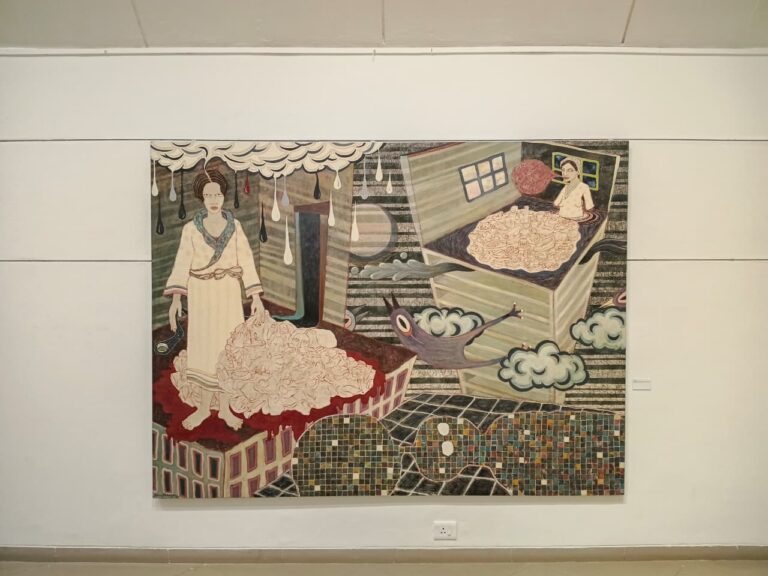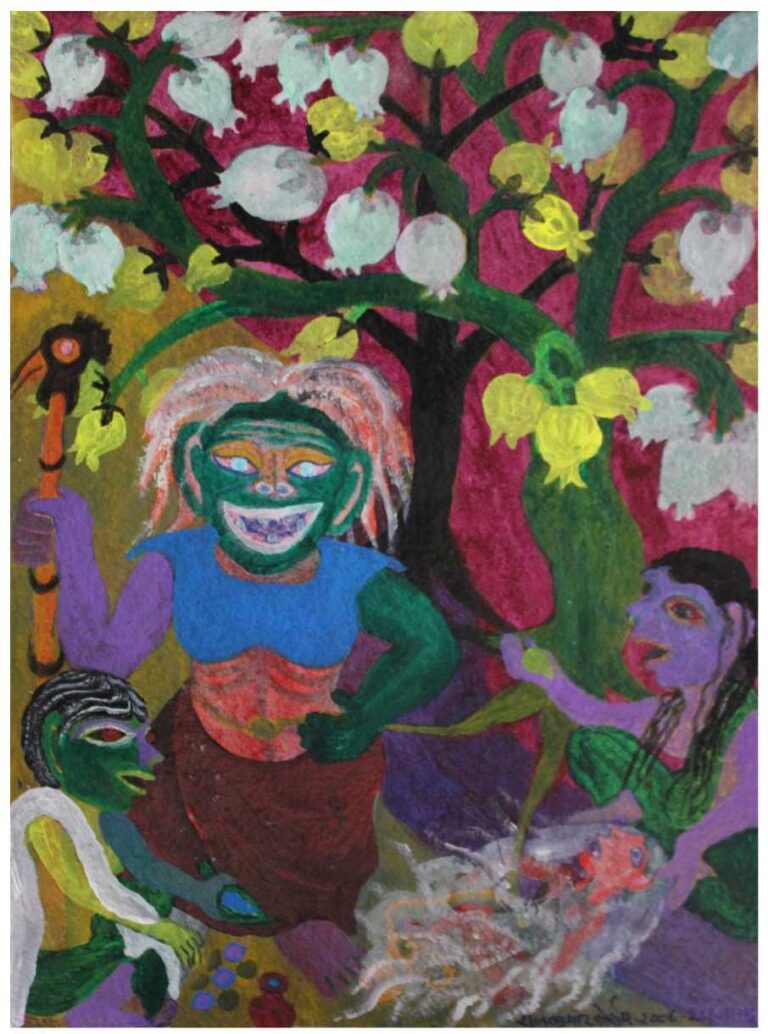“I know of only one revolution in art, it belongs to all ages, and consists of the exact adjustments of form to subject matter, of language to theme.” – Albert Camus
The quotient of ‘modern’ in Indian art has woven itself around some very potent and receptive expositions. Tracing a transverse path through the delicate transition from the Pre to Post-Independence periods, TAKE on art focuses on the period of 1950-60s. Aware that such a gesture would be akin to opening up a virtual Pandora’s box, considering the innumerable speculations and subjective interpretations of what and who really constitute the ‘Indian Modern’, TAKE on art bravely wants to ‘take’ the plunge. The plunge into the era, signaled by the desire for new beginnings or a mythical tabula rasa, converges with questions regarding the continuity of artistic traditions on one hand and the embarkation on a cultural challenge, to stake claim to the empty space previously occupied by the colonial-anti-colonial position1 with regard to the other. An act like this purports not only to take cognizance of the zeitgeist of the time but also of the art historical impulse. Writing for Seminar – Art and Artists in 1960, Sankho Choudhuri quite appropriately observed, “More than once India experienced a dark age when all progress or development came to standstill. When favourable conditions prevailed again, these areas had to retrace their lost threads and a fresh beginning was made absorbing new elements which happened to come in. It is this element of intermittent development and growth that makes the study of Indian art history fascinating and baffling at the same time.”

And the TAKE on art team embarked on the journey of excavating the archives of the past; there was a sense of excitement and caution to bring forth to the readers not just a text tracing the legacy of a particular artist but critical material which brings a flavor of the period. Hence, we followed an approach wherein we concentrated not simply on profiling pertinent texts, but rather in re-producing some which were written in the 50s and 60s. Since documentation is not available of certain artists or genres of this period, we have engaged with texts from the 40s and 70s as well. The texts/critiques in the form of newspaper reviews or catalog/journal essays, not only articulated thoughts of some of the most dynamic artists and writers of that time but also encapsulated the writing style that was representative of the art criticism and history practice in Post-Independence India.
Although collating material that included texts, catalogues and images from various sources has been quite a task, in most cases we encountered a willingness amongst the custodians of these contents to openly disseminate information for our readers. Our writers also came forth to help analyse, ‘excavate’ and introduce the texts of their choice. They attempt to contextualize the article from their unique perspectives, as many of them specialize in these areas. This includes a brief introduction about the artist and critics, making this issue an archival delight. Besides texts that delve into reviews of certain exhibitions from the time, the issue includes seminal pieces which discuss the activities of important art collectives like the Calcutta Group, the Progressive Art Group, the Delhi Shilpi Chakra, and the dialogues they sought to cultivate in their specific geographical and cultural locations.
The ‘Moderns’ have established a grounded tradition in India and many of them still continue to work with the same passion and dedication, with their work standing united for its fine execution. M F Husain [Ram Rahman has written the lead essay from a personal standpoint illustrated with a rich repertoire of never-seen-before images of the artist] started work as designing and painting the scenery for film sets and later, cinema hoardings, only pursuing a fulltime career as an artist after 1947. The economic uncertainty of the profession in contrast to commercial ventures, and the twin fear of penury marked an uneasy path for these artists, with only the determined and passionate surviving. Patronage, in case of artists like Souza [as discussed by the artist in ‘A Painter’s Aesthetic and Emotional Encounter’ in Indian and Foreign Review introduced by Girish Shahane] defined and influenced the regime of the artist’s life. Auctions were a far cry decades ago, and interestingly the auction records of recent years have testified that the Moderns have stood the test of boom and bust more than any other, fairing consistently well in times of economic debacle, and continuing to command great value today. The forthcoming India Art Summit 2011 will also focus on representing the Moderns with the London-based Rob Dean Art Gallery, presenting a solo exhibition of the works of FN Souza and showings at Dhoomimal Art Gallery, Kumar Gallery, and Vadehra Art Gallery, amongst others.
Beyond this section, ‘Adventures of a Photographer’ is a photo-story created especially for TAKE on art by Dayanita Singh on the occasion of her retrospective book; co-published by Penguin Studio. In a special interview artist Manjunath Kamath speaks his heart out on the recently embarked site-specific project at Gallery Espace ‘Conscious – Sub-Conscious’ with Manisha Parekh. I am sure, our regular columns – The Phantom Lady Strikes Again, Johny ML’s ‘I Shot the Sheriff’ and Manisha Gera’s ‘Fly on the Wall – 2’ will continue to delight the readers.
Bringing out this issue has been quite a knotty affair, accompanied by the voracity to include artists and issues which have escaped the central narrative of India, as a nation as well as an artistic fraternity. With the production of a magazine, which isn’t a book comes scope for inadequacies, and one just cannot promise complete satiation. However, I earnestly hope that TAKE Modern is able to capture an aura of the period that continues to be a living insignia, thriving in its historical dynamism. I would like to extend a warm sense of gratification to those without whose support, this issue would not have been possible; Krishen Khanna, Jyoti Bhatt, KG Subramanyan, Ram Rahman, Sanjeet Choudhury, Sakina Mehta, Gieve Patel, Satish Gujral, Chittrovanu Mazumdar, Vidya Shivadas; all the contributing writers and a special thanks to my Editorial Coordinator – Suruchi Khubchandani.
The season ahead will witness a heavy dose of art fairs across the globe. TAKE on art gears up to catch the action as a media partner in its next issue at the forthcoming India Art Summit and Art Stage Singapore in January 2011.
Enjoy Reading.
Bhavna Kakar
Berlin
1 Anshuman Das Gupta,‘A House of Modernism,’pp. 162, Art and Visual Culture in India, ed. Gayatri Sinha, Marg Publications.














